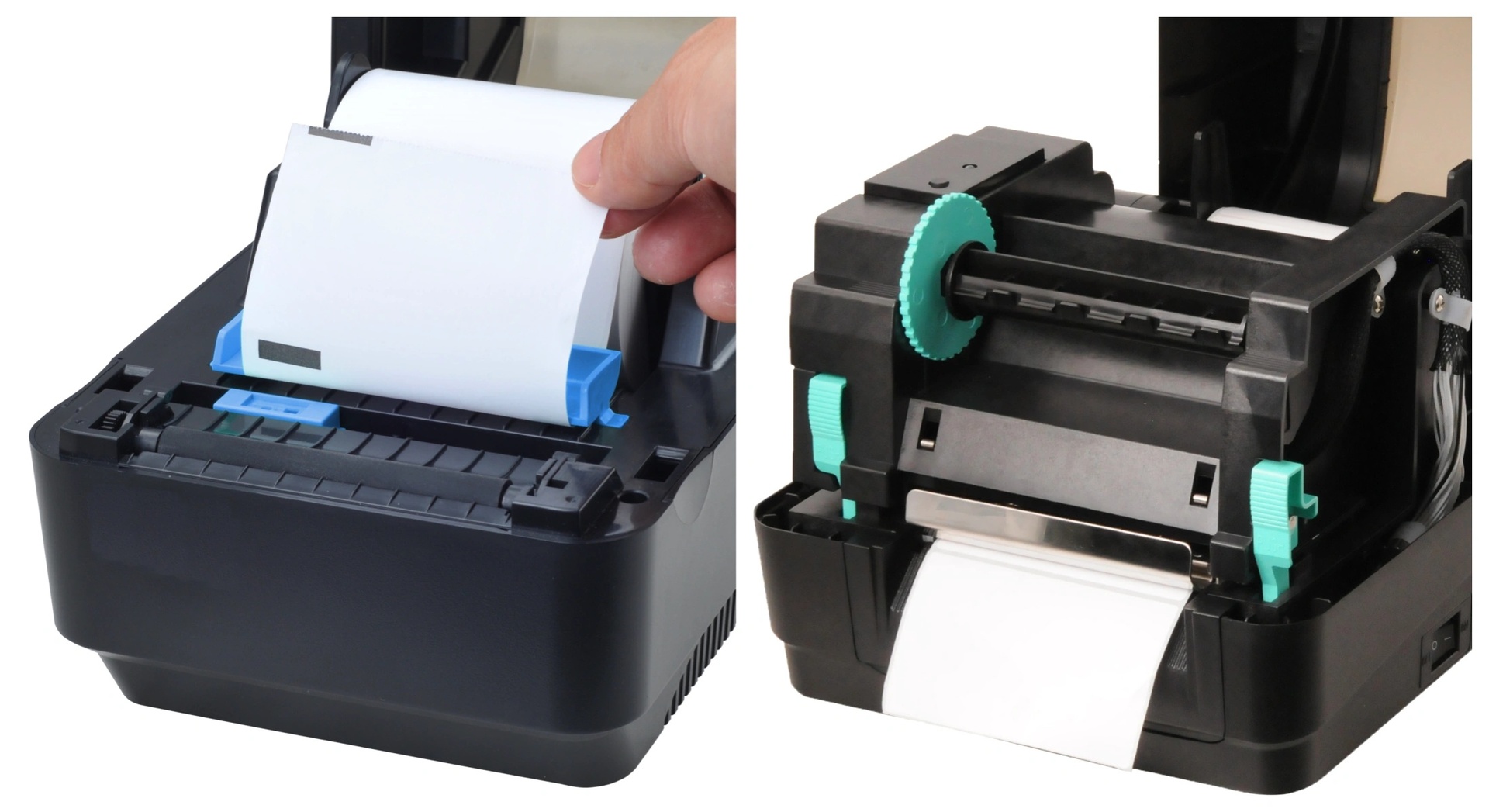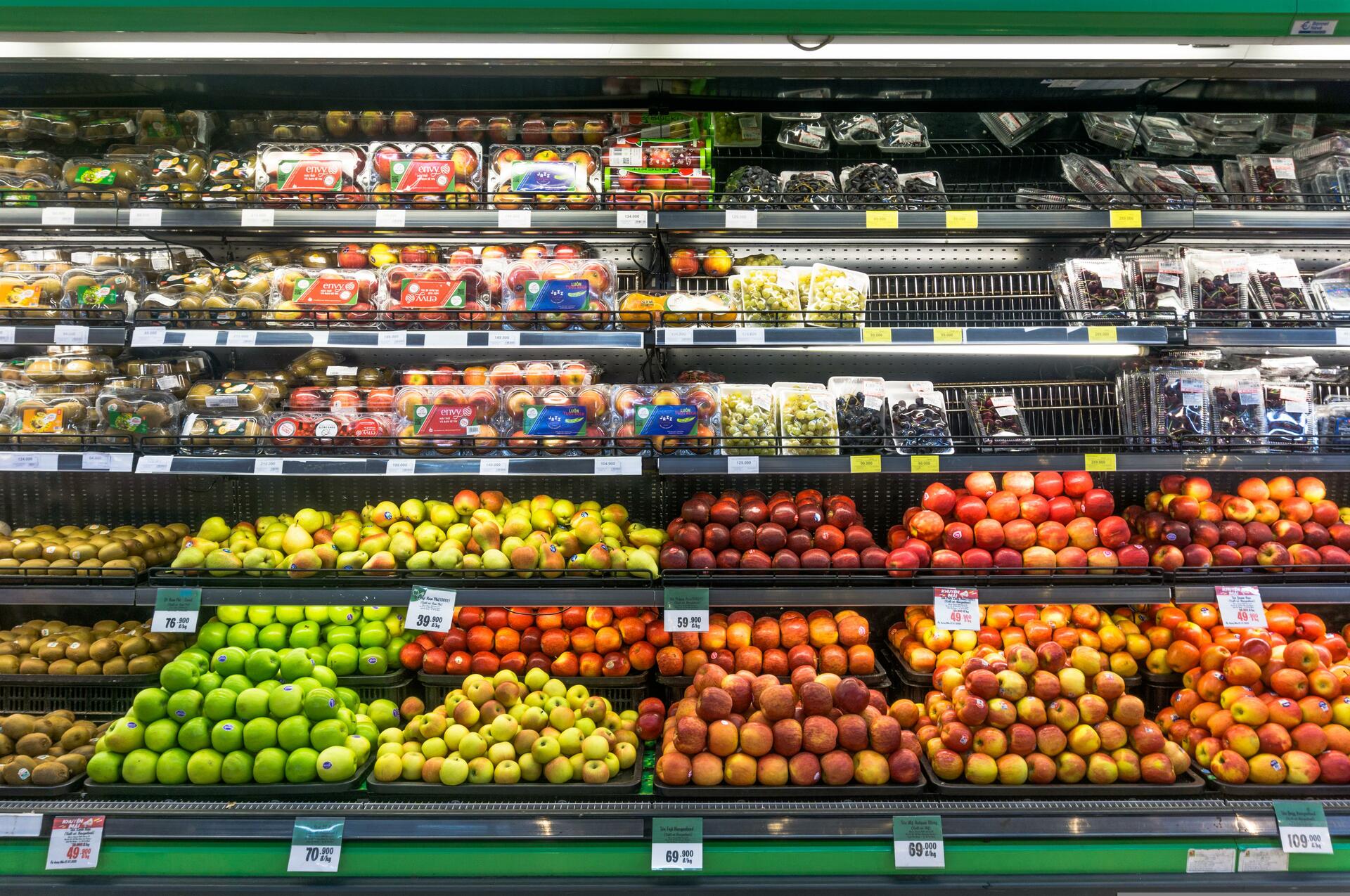

Direct Thermal VS Thermal Transfer
Principle of Operation: Direct Thermal Printing is an inkless printing technology that produces an image by heating the printhead. The printhead contains a number of tiny heating elements, and when these elements are heated, they form an image or text on special thermal paper. The thermal paper is coated with a layer of heat-sensitive material that chemically reacts when heated to change color.
Features:
Ø High-Speed: The thermal printhead heats the paper directly without the need for ink or ribbons, making it extremely fast and suitable for fast printing needs.
Ø Easy to operate: Maintenance and operation are relatively simple, reducing the difficulty of use as there is no need to change ink or ribbon.
Ø The low cost of thermal paper and the lack of additional consumables for the printing process make the overall cost of use more economical.
Application Scenarios:
Direct Thermal Printing is widely used for ticket printing in supermarkets, restaurants, banks, etc., as well as some industrial applications that require fast label printing.
Such As:
Ø Receipt Printing: Direct Thermal Printing is widely used in POS, cash registers and other receipt printing.
Ø Courier labels: Direct Thermal Printing is commonly used in the courier industry to generate courier sheets and labels.


Principle of Operation: the use of heated printheads to transfer the ink on the ribbon to the print media. The ribbon usually consists of a film coated with an ink layer, which is transferred to paper or other media at high temperatures to form an image.
Features:
Ø High durability: Thermal Transfer prints images and text with high durability, resistant to light, friction, chemicals and other external factors, suitable for long-term preservation of documents.
Ø Wide range of printing media: Thermal Transfer Technology can be printed on a wide range of media, including plain paper, label paper, synthetic materials, etc. It has a wide range of applications.
Ø High print quality: Thermal Transfer Printing can provide high-resolution, high-quality images and text, suitable for scenarios that require fine printing.
Application Scenarios: Thermal Transfer Printing is widely used for personalized printing in the fields of apparel, shoes and hats, sports equipment, electronic products, and some commercial and artistic printing that requires high-quality images.
Such as:
Ø Barcode Printing: Thermal Transfer Printing is widely used in barcode printing, especially in manufacturing and logistics industries for generating long-lasting and durable barcode labels.
Ø Card Printing: Thermal Transfer Printing technology is commonly used to print ID cards, membership cards, employee cards and other cards that require long-term use and high-quality images.


When choosing Direct Thermal Printing or Thermal Transfer Printing, you need to consider the following factors:
1. Application scenarios: If your printing needs are for high-frequency and short-term use, such as receipt printing and courier labels, Direct Thermal Printing may be more suitable. If you need to print long-lasting and durable documents or labels, such as barcodes, cards, etc., thermal transfer printing is a better choice.
2. Print quality: Thermal Transfer Printing provides higher print quality and durability, which is suitable for scenarios with high demands on printing results.
3. Cost factor: Direct Thermal Printing has lower initial and maintenance costs and is suitable for applications with limited budgets; Thermal Transfer Printing, although the cost of consumables is higher, its durability may reflect better value for money in long-term use.
4. Print media: If printing on multiple media is required, Thermal Transfer Printing offers more options for diverse printing needs.
Conclusion
In conclusion, Direct Thermal Printing and Thermal Transfer Printing have their own advantages and disadvantages, and the choice needs to be based on the specific needs of a comprehensive consideration. If you are concerned about cost and speed, and do not need to keep the printed content for a long time, thermal printing is a good choice. If quality and durability are more important to you, thermal transfer printing will better meet your needs. By understanding and weighing the characteristics of these two printing technologies, you can find the solution that best suits your application scenario.
For more information on labels, printers and ribbons call us at contact@ggimge.com